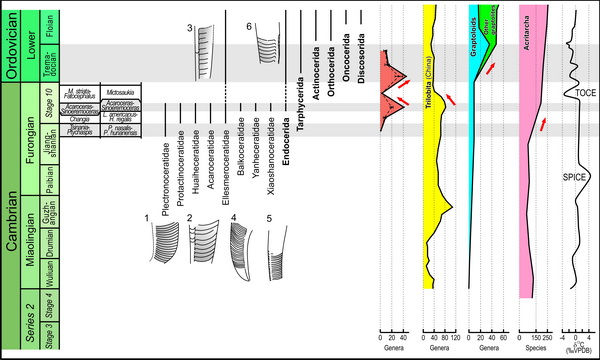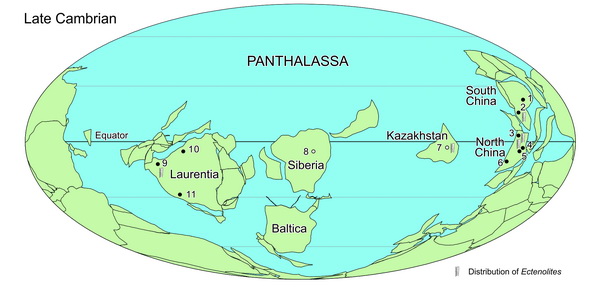As one of the major groups in the Great Ordovician Biodiversification Event, cephalopods may have played a critical role in the marine environment. Their origins and radiations indicate the expansion of the marine ecosystem from the water bottom to open sea. However, the morphologic characteristic and diversity of the early cephalopods during the Cambrian–Ordovician transition have been poorly known.
Recently, Dr. Fang Xiang and Prof. Zhang Yuandong from Nanjing Institute of Geology and Palaeontology, Chinese Academy of Sciences, and Dr. Bj?rn Kr?ger from University of Helsinki, Finland, conducted a research on the cephalopods from the latest Cambrian.
In the study, all the published Cambrian cephalopod occurrences were analyzed using several quantitative methods, including cluster analysis (CA) and non-metric multidimensional scaling (NMDS). The results showed that the cephalopods first appeared during the late Cambrian in North China, and rapidly dispersed to South China, North America, and probably also to Siberia and Kazakhstan, showing their first evolutionary radiation. However, shortly afterwards, nearly 95% of these existing cephalopods disappeared abruptly in the Cambrian–Ordovician transition, with only several elements of two families surviving into the earliest Ordovician, which became the ancestors of the Ordovician and subsequent cephalopods.
In addition, the rapid diversification of cephalopods during the late Cambrian approximately coincides with the origination and diversification of several other groups, e.g., graptolites and radiolarians, while the mass extinction of cephalopods in the Cambrian–Ordovician transition coincides with those of trilobites and brachiopods, and temporally with a major late Cambrian sea-level regression.
This study was financially supported by the National Science Foundation of China, Chinese Academy of Sciences. This study is a contribution to the IGCP653 ‘The onset of the Great Ordovician Biodiversity Event’.

Range chart of early cephalopod faunas through the Cambrian and Ordovician transition and the diversity of some other major marine organisms.

Palaeobiogeographic distribution of cephalopods during the latest Cambrian.
Download:
